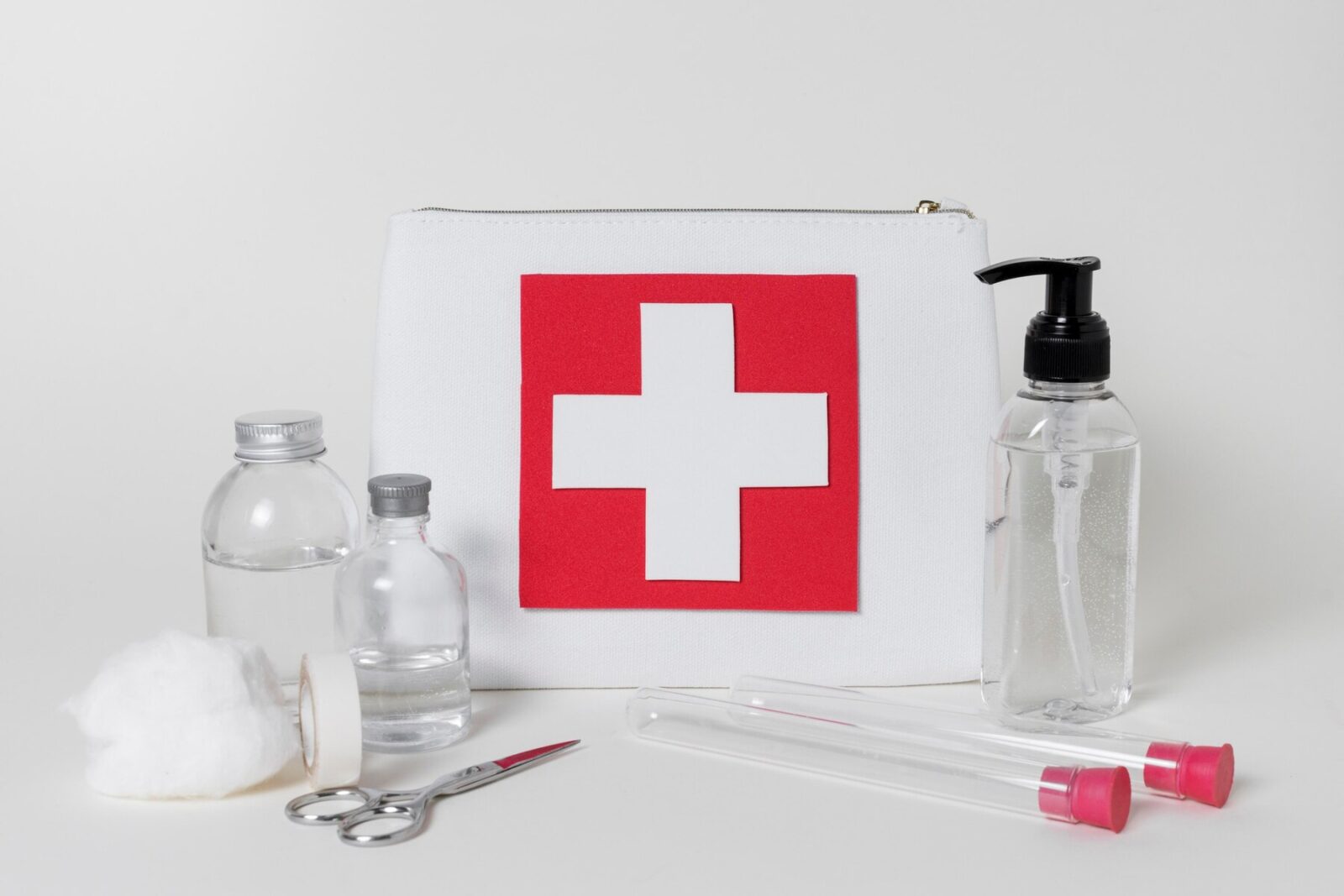
Essential PPE in the Food Industry: What You Need to Know
Overwhelmed by PPE options for food safety? Master your PPE selection for food workers safety with these practical tips.

Get 20€ off on your first order!
Laboratories are essential in scientific, medical, and industrial research, yet they come with unique risks. Handling chemicals, biological agents, and specialized equipment creates a range of hazards, each requiring specific first aid responses. Understanding which first aid measures to have in place can reduce the risk of injury and protect laboratory personnel. This guide aims to provide a clear and detailed overview of the first aid measures best suited for laboratory settings in Europe, following strict occupational health and safety standards.
In laboratories, hazards often arise from exposure to:
To ensure a quick and effective response, it’s crucial to understand the type of hazard present in a laboratory environment, as each hazard has its specific first aid requirements.
Laboratory personnel need access to basic and specialized first aid items that can address incidents such as:
By categorizing first aid needs based on potential injuries, laboratories can ensure that staff have immediate access to suitable care.
Chemical burns are a primary concern in many laboratories. Common agents causing burns include strong acids, bases, and solvents. Quick and effective response is critical to prevent deep tissue damage.
Recommended First Aid Measures:
Storage and Accessibility: Position emergency rinsing stations in easily accessible areas near workstations to ensure immediate response.
Eye injuries in laboratories can result from chemical splashes, glass particles, or exposure to harmful vapors. Given the sensitivity of eye tissue, prompt care is essential to prevent permanent damage.
Recommended First Aid Measures:
Storage and Accessibility: First aid kits should contain a dedicated eye-care section and should be accessible at all times.
Handling glassware, pipettes, and other sharp instruments can lead to cuts and punctures. Proper wound care can prevent infection and control bleeding until professional medical help arrives.
Recommended First Aid Measures:
Storage and Accessibility: Ensure that wound care supplies are stored in a first aid kit within reach, especially near workstations involving glassware or sharp tools.
Laboratories that work with volatile chemicals or biological agents may face risks of inhalation injuries. Exposure to toxic fumes can cause respiratory distress or chemical pneumonitis, necessitating immediate response.
Recommended First Aid Measures:
Storage and Accessibility: Respiratory protective equipment and fume hoods should be strategically placed around areas where hazardous fumes are generated, with clear guidelines on usage.
Fire is a critical hazard in laboratories, especially in those that work with flammable chemicals, electrical equipment, or open flames. Having the right first aid and firefighting equipment is essential to prevent injury or minimize its severity.
Recommended First Aid Measures:
Storage and Accessibility: Fire extinguishers, blankets, and burn treatment supplies should be positioned near each work area and clearly marked.
Laboratory staff should be well-trained in administering first aid in various situations. Training programs should cover:
Regular refresher courses and practical exercises can help laboratory personnel stay prepared for any emergency.
European laboratory safety regulations, such as those provided by the European Agency for Safety and Health at Work (EU-OSHA), outline specific requirements for first aid preparedness in labs. Compliance with these standards ensures:
Following these guidelines not only promotes safety but also aligns the laboratory with best practices across the European Union.
Selecting the appropriate first aid measures for laboratory hazards is essential for ensuring a safe work environment and minimizing risks associated with chemical, biological, and physical dangers. By understanding common laboratory injuries and preparing specific first aid responses for each, laboratories can effectively protect their staff and maintain compliance with European health and safety standards. Each laboratory should have a clear, accessible first aid plan that includes training for personnel, well-maintained emergency equipment, and strict adherence to European regulatory guidelines.
By prioritizing safety and preparedness, laboratories can create a secure environment that supports both the well-being of their personnel and the quality of their research activities.
Thank you! You've signed up for our newsletter.



















Overwhelmed by PPE options for food safety? Master your PPE selection for food workers safety with these practical tips.

Struggling to maintain clear vision in demanding environments? This guide is here to help. By the end, you’ll know exactly...

Electricians across Europe face unique challenges that require reliable safety glasses to ensure both protection and efficiency. Whether safeguarding against...

Overwhelmed by PPE options for food safety? Master your PPE selection for food workers safety with these practical tips.

Struggling to maintain clear vision in demanding environments? This guide is here to help. By the end, you’ll know exactly...

Electricians across Europe face unique challenges that require reliable safety glasses to ensure both protection and efficiency. Whether safeguarding against...
Get 10€ off on your first order!
Save 30% by buying directly from brands, and get an extra 10€ off orders over €100
Save 30% by buying directly form brands, and get an extra 10€ off orders over €100